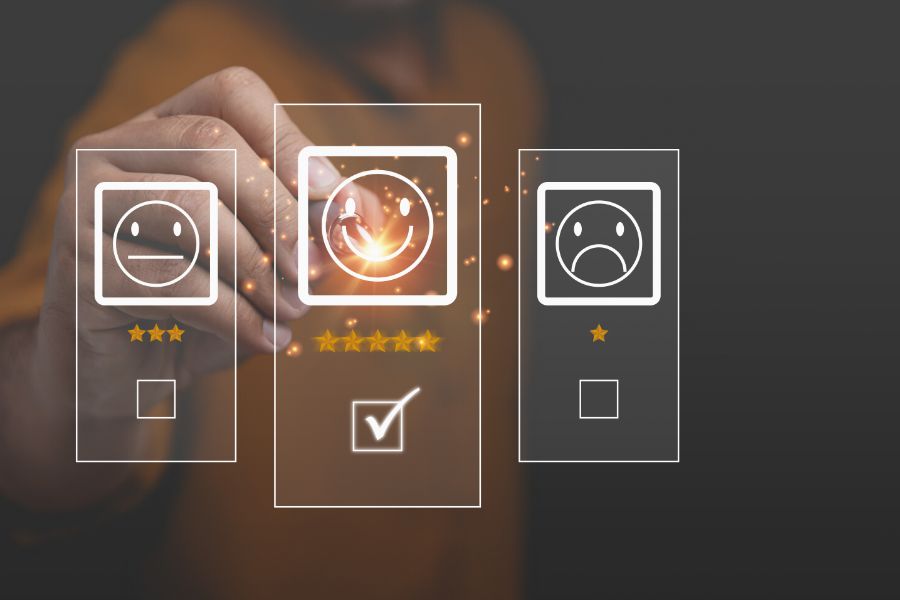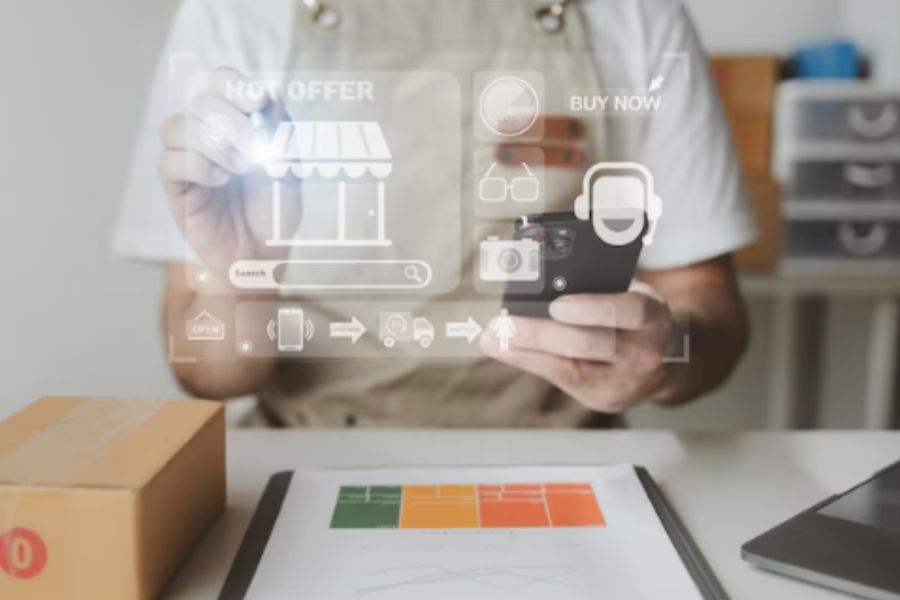For businesses, delivering exceptional customer experiences has become paramount for sustained success. To achieve this goal, companies must leverage a suite of essential customer experience management tools (CXM). From seamless transactions at the point of sale to personalized interactions across multiple channels, these tools play a pivotal role in understanding, managing, and enhancing the overall customer journey. In this article, we explore the indispensable CXM tools that businesses need to thrive in today’s competitive market.
What Are Customer Experience Management Tools?
Customer experience management tools are software solutions designed to help businesses manage, measure, and improve customer interactions and overall experience across various touchpoints. These tools aim to enhance customer satisfaction, loyalty, and advocacy by providing insights and enabling proactive management of the customer journey.
In 2021, the global revenue of the customer experience personalization and optimization software and services industry was estimated at 7.6 billion U.S. dollars.
Projections indicate a significant growth trajectory, with expectations pointing towards a surge to 11.6 billion U.S. dollars by 2026. This anticipated increase reflects a remarkable surge of over 65 percent within the specified period.

Why Do You Need Customer Experience Management Tools?
Customer Experience Management (CEM or CXM) tools are essential for several reasons, primarily because they help businesses optimize the customer journey, enhance satisfaction, and drive loyalty. Here are the key reasons why CEM tools are necessary:
1. Understanding Customer Needs and Expectations
- Feedback collection: CEM tools allow businesses to gather customer feedback through surveys, reviews, and social media monitoring, helping them understand customer needs, preferences, and pain points.
- Sentiment analysis: By analyzing customer sentiments, businesses can gauge the emotional responses to their products or services, enabling more informed decisions.
2. Improving Customer Satisfaction
- Personalized experiences: CEM tools use customer data to create personalized experiences, increasing the relevance and satisfaction of interactions.
- Proactive service: With real-time insights, businesses can address issues before they escalate, leading to higher customer satisfaction.
3. Enhancing Customer Retention and Loyalty
- Consistent experience: CEM tools ensure a consistent customer experience across all touchpoints, fostering trust and loyalty.
- Loyalty programs: By understanding customer behavior, businesses can design effective loyalty programs that reward and retain customers.
- Efficient support: Integrated helpdesk and ticketing systems streamline customer support processes, ensuring quick and efficient issue resolution.
4. Driving Business Growth
- Increased revenue: Satisfied and loyal customers are more likely to make repeat purchases and recommend the brand to others, driving revenue growth.
- Market differentiation: Exceptional customer experience can be a significant differentiator in a competitive market, attracting new customers and retaining existing ones.
5. Optimizing Customer Journey
- Journey mapping: CEM tools help visualize the customer journey, identifying touchpoints and interactions that need improvement.
- Seamless interactions: Ensuring seamless transitions between different channels and touchpoints enhances the overall experience.
6. Data-Driven Decision Making
- Actionable insights: Advanced analytics provided by CEM tools offer actionable insights into customer behavior and trends, guiding strategic decisions.
- Performance metrics: Tracking key performance indicators (KPIs) like Net Promoter Score (NPS) and Customer Satisfaction (CSAT) helps measure the effectiveness of CX initiatives.
7. Cost Efficiency
- Reduced churn: By improving customer satisfaction and loyalty, CEM tools help reduce customer churn, which is often more cost-effective than acquiring new customers.
- Efficient resource allocation: Insights from CEM tools enable businesses to allocate resources more efficiently, focusing on areas with the highest impact on customer experience.
In short, CEM tools are crucial for businesses looking to build strong, lasting relationships with their customers by providing exceptional and personalized experiences. They enable a deeper understanding of customer needs, drive loyalty, enhance satisfaction, and ultimately contribute to sustained business growth and success.
Must-Have Features Of Good Customer Experience Management Tools
A reliable Customer Experience Management (CXM) tool should have the following must-have features:
1. Customer Feedback Collection
Effective CXM tools should facilitate the easy collection of customer feedback through multiple channels, including surveys, feedback forms, social media, and direct interactions. This helps in understanding customer sentiments and areas needing improvement.
2. Journey Mapping
CXM tools should provide detailed customer journey mapping to visualize and analyze every touchpoint a customer has with the company. This helps identify pain points and optimize the customer experience.
3. Sentiment Analysis
The ability to analyze customer sentiments from various data sources, such as surveys, social media, and reviews, is crucial. This feature helps in gauging overall customer satisfaction and emotional responses.
4. Personalization
CXM tools must offer advanced personalization capabilities, using customer data to tailor interactions and content. This includes personalized recommendations, targeted marketing campaigns, and customized support experiences.
5. Real-Time Analytics
Real-time analytics allow businesses to monitor and respond to customer interactions as they happen. This includes tracking engagement metrics, behavior analysis, and immediate feedback.
6. Customer Segmentation
Effective segmentation allows businesses to categorize customers based on demographics, behavior, and preferences. This helps in delivering more targeted and relevant experiences.
7. Integration Capabilities
CXM tools should easily integrate with existing business systems such as CRM, ERP, marketing automation, and e-commerce platforms. This ensures a seamless flow of data and a holistic view of the customer.
8. Actionable Insights
The tool should provide actionable insights derived from data analysis, helping businesses make informed decisions to improve customer experience. This includes identifying trends, predicting behavior, and suggesting improvements.
9. Automated Workflows
Automation of customer experience workflows, such as sending personalized follow-up emails or routing feedback to the appropriate team, can enhance efficiency and responsiveness.
10. Multi-Channel Support
CXM tools should support multiple communication channels, including email, chat, social media, and phone. This ensures that customers can interact with the company through their preferred medium.
11. Security and Compliance
Ensuring data security and compliance with regulations like GDPR is critical. Good CXM tools should have robust security measures and compliance capabilities.
12. Scalability
The tool should be scalable to accommodate business growth and increasing amounts of customer data, ensuring continued effectiveness as the business expands.
By incorporating these features, a CXM tool can significantly enhance the ability of a business to manage and improve the overall customer experience.
Top Essential Customer Experience Management Tools
Here’s how each fits into the customer experience management ecosystem:
CRM (Customer Relationship Management)
- Function: CRM systems store and manage customer data, interactions, and relationships.
- Key features: Contact management, sales tracking, pipeline management, customer service support.
- Benefits: Helps businesses track customer interactions, improve sales processes, and provide personalized customer service.
POS (Point of Sale)
- Function: POS systems handle transactions and manage inventory in retail and hospitality environments.
- Key features: Sales processing, inventory management, reporting and analytics.
- Benefits: Streamlines the purchase process, tracks sales data, and ensures accurate inventory management.
Analytics and Data Visualization
- Function: Analytics tools gather, analyze, and visualize data to provide insights into customer behavior and trends.
- Key features: Data collection, analysis, visualization, predictive modeling.
- Benefits: Helps businesses understand customer preferences, identify patterns, and make data-driven decisions to improve customer experience.
Customer Feedback Tools
- Function: Feedback tools collect and analyze customer feedback to understand satisfaction levels and areas for improvement.
- Key features: Surveys, sentiment analysis, feedback collection across multiple channels.
- Benefits: Provides actionable insights for improving products, services, and overall customer experience based on direct feedback from customers.
Omnichannel Communication Platforms
- Function: Omnichannel platforms enable businesses to communicate with customers seamlessly across multiple channels.
- Key features: Integration with various communication channels (phone, email, chat, social media), unified customer view.
- Benefits: Ensures consistent and personalized communication, enhances customer engagement, and improves overall experience.
Integrating these tools and platforms into a cohesive customer experience management strategy allows businesses to understand, track, and optimize every aspect of the customer journey, ultimately leading to increased satisfaction, loyalty, and revenue.
ConnectPOS- An Ideal Choice for Essential Customer Experience Management Tools
ConnectPOS is indeed an ideal choice for essential customer experience management tools, especially for businesses operating in the retail and hospitality sectors. Here’s why ConnectPOS stands out:
1. Seamless In-Store Transactions
- Efficient Point of Sale (POS): ConnectPOS offers a user-friendly interface for processing transactions quickly and accurately, reducing wait times and enhancing customer satisfaction.
- Multiple payment options: It supports various payment methods, including cash, credit/debit cards, mobile wallets, and more, providing customers with flexibility.
2. Omnichannel Capabilities
- Unified inventory management: ConnectPOS syncs inventory data across multiple sales channels, ensuring accurate product availability and preventing overselling.
- Omnichannel sales: Businesses can offer omnichannel services like click-and-collect, ship-from-store, and returns across all touchpoints, providing a seamless shopping experience.
3. Integration with CRM Systems
- Customer insights: ConnectPOS integrates with CRM systems, enabling businesses to access customer profiles, purchase history, and preferences at the point of sale.
- Personalized service: Based on customer data, staff can provide personalized recommendations, promotions, and loyalty rewards, fostering stronger customer relationships.
4. Reporting and Analytics
- Real-time insights: ConnectPOS provides real-time analytics on sales performance, inventory turnover, and customer behavior, empowering businesses to make informed decisions.
- Trend analysis: It identifies trends and patterns in customer purchasing behavior, helping businesses optimize their product offerings and marketing strategies.
5. Customer Engagement Tools
- Feedback collection: ConnectPOS can integrate with customer feedback tools to gather insights directly from customers, enabling businesses to address concerns and improve the overall experience.
- Promotional campaigns: Businesses can launch targeted marketing campaigns and promotions directly from the POS system, driving customer engagement and sales.
6. Mobility and Flexibility
- Mobile POS: ConnectPOS offers mobile POS solutions, allowing businesses to serve customers anywhere in the store, reducing wait times and enhancing convenience.
- Scalability: It scales with the business, supporting single-store operations to large multi-location enterprises, ensuring flexibility and growth potential.
ConnectPOS empowers businesses to deliver exceptional customer experiences by streamlining transactions, providing personalized service, and leveraging data-driven insights to optimize operations and drive growth.
FAQs About Customer Experience Management Tools
- What is the difference between CXM tools and CRM tools?
Customer Experience Management (CXM) tools focus on enhancing the overall customer experience by analyzing interactions and feedback to improve satisfaction and loyalty. They offer features like feedback collection, journey mapping, and sentiment analysis.
Customer Relationship Management (CRM) tools, on the other hand, manage customer relationships through sales, marketing, and service processes, offering features like contact management, sales automation, and lead management. While CRM tools handle customer data and relationships, CXM tools concentrate on the broader experience.
- Can CXM tools integrate with existing systems?
Yes, CXM tools can integrate with various systems such as CRM platforms (e.g., Salesforce), marketing automation tools, ERP systems, e-commerce platforms, and customer support systems. This integration ensures a holistic view of customer interactions, enabling better experience management.
- How do CXM tools collect customer feedback?
CXM tools collect customer feedback through surveys (post-purchase, NPS, CSAT), embedded feedback forms on websites or apps, social media monitoring, customer service interactions (call centers, chatbots), and by analyzing behavioral data on digital channels.
- What types of analytics do CXM tools provide?
CXM tools offer analytics such as sentiment analysis (gauging customer emotions), journey analytics (identifying pain points in customer journeys), engagement metrics (tracking interaction rates), customer segmentation (dividing customers based on behavior and preferences), and predictive analytics (forecasting future behavior and satisfaction).
- How do CXM tools help in personalizing customer interactions?
CXM tools personalize interactions by analyzing past behaviors and preferences, delivering tailored content and recommendations, and using AI to adjust messaging and offers in real time. They map customer journeys to customize touchpoints and manage real-time interactions based on current behavior and feedback, ensuring relevant and timely engagement.
Conclusion
In conclusion, investing in essential customer experience management tools is not just a strategic choice but a necessity for businesses aiming to thrive in the competitive marketplace. By leveraging these tools effectively, businesses can streamline operations, foster stronger customer relationships, and ultimately drive growth and profitability.
With customer expectations continually evolving, embracing a customer-centric approach supported by the right CXM tools is key to staying ahead of the curve and delivering exceptional experiences that keep customers coming back for more. Feel free to book a demo with us to see how ConnectPOS can elevate your customer experience management!



